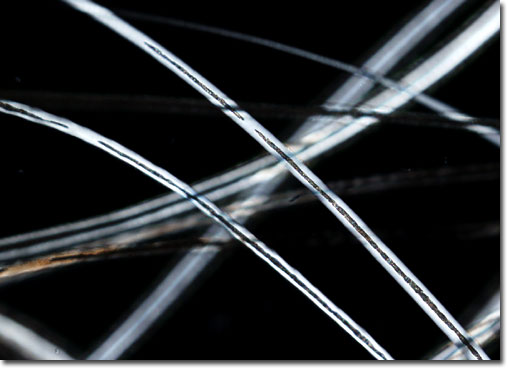|
Ocelots are generally terrestrial animals, but they are also adept at climbing and swimming and are sometimes willing to enter trees or water to capture prey. The diet of the ocelot, therefore, includes birds and fish, as well as rodents and reptiles. Ocelots carry out their hunting endeavors primarily at night, though they may also be active during the day. The medium-sized felines may breed any time during the year, and males and females frequently share territories, which may comprise an area of up to three square miles. Litters of ocelots tend to be small and are kept in a protective den, where they are nurtured by the mother.
|
